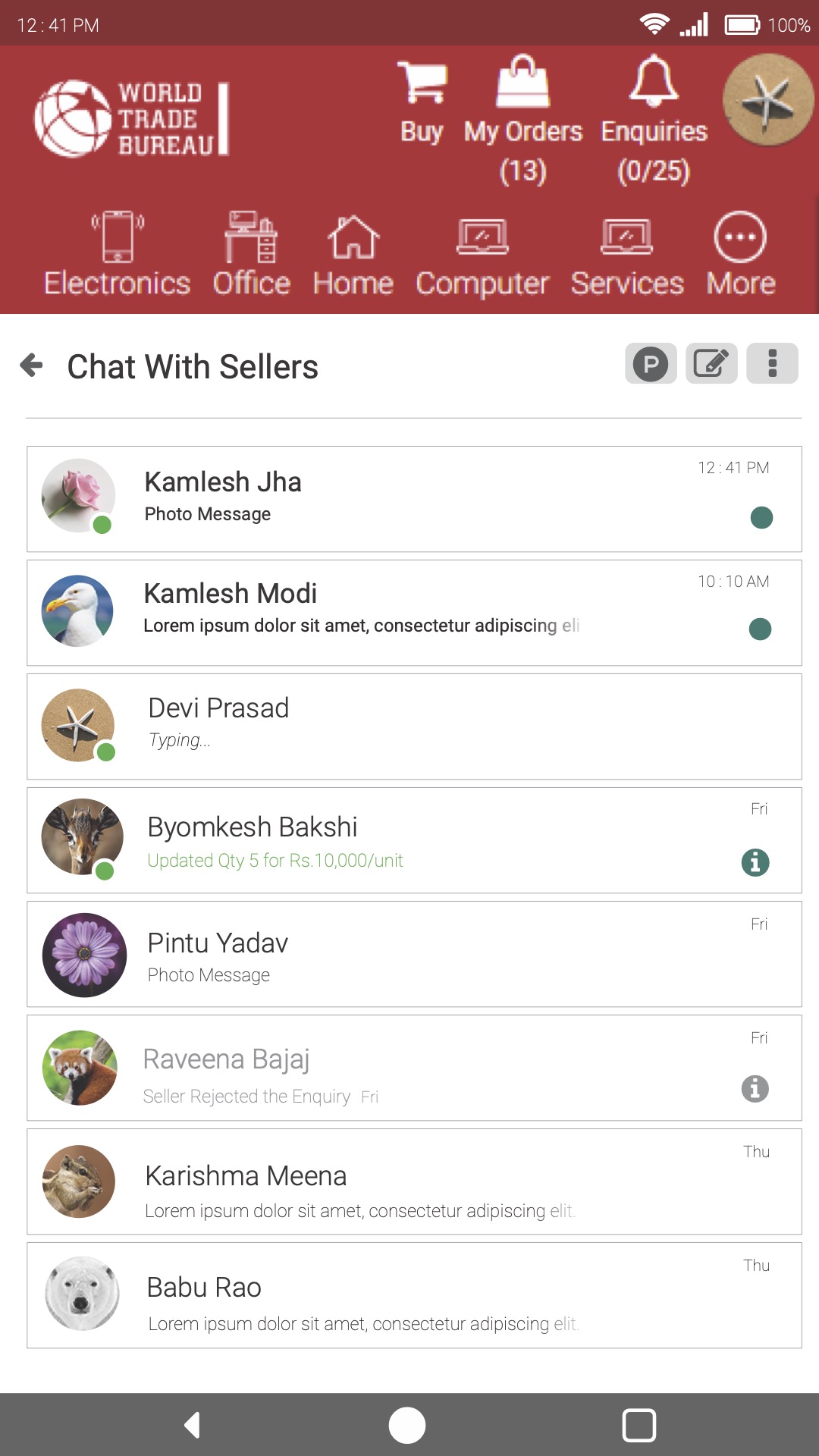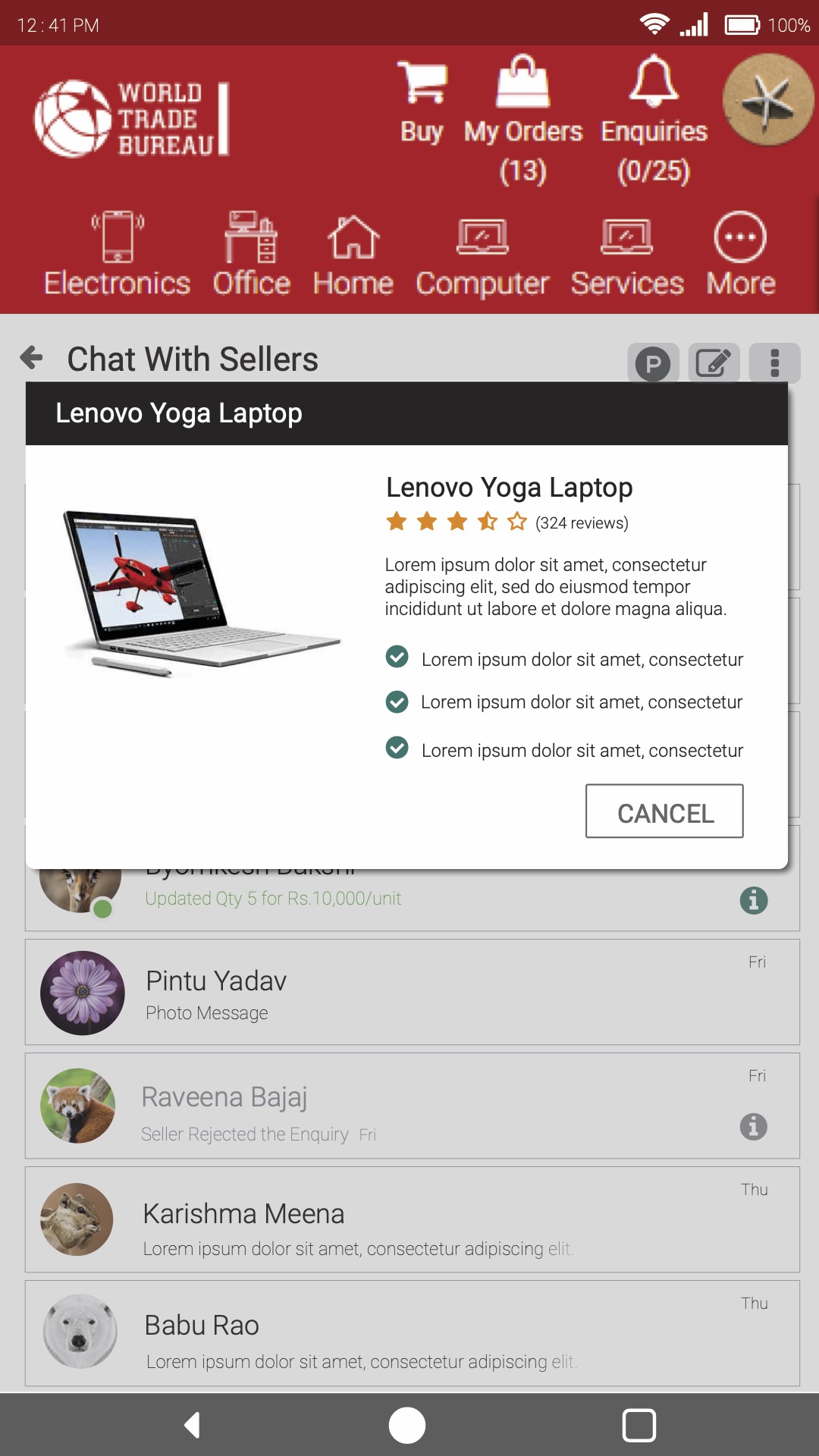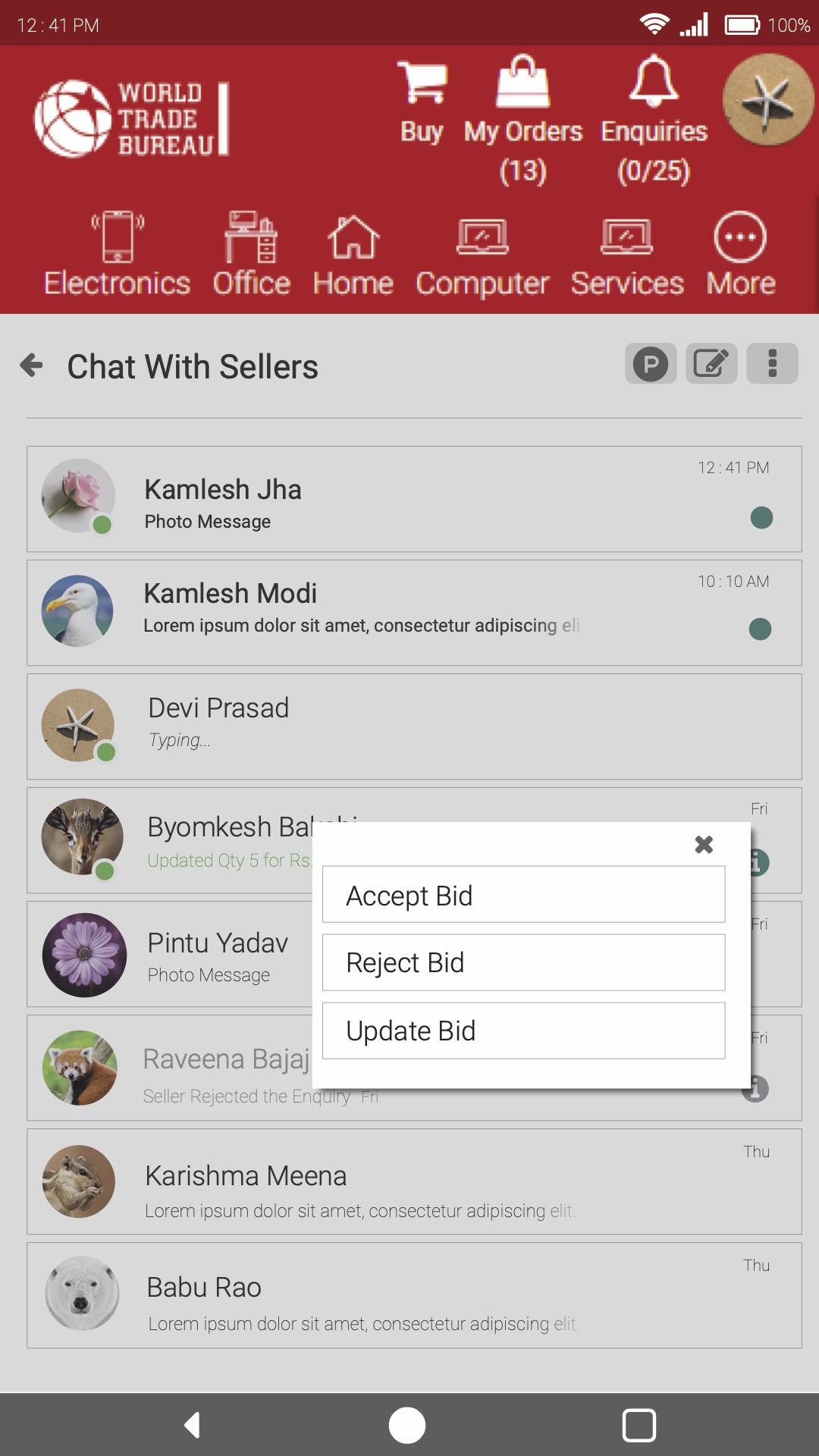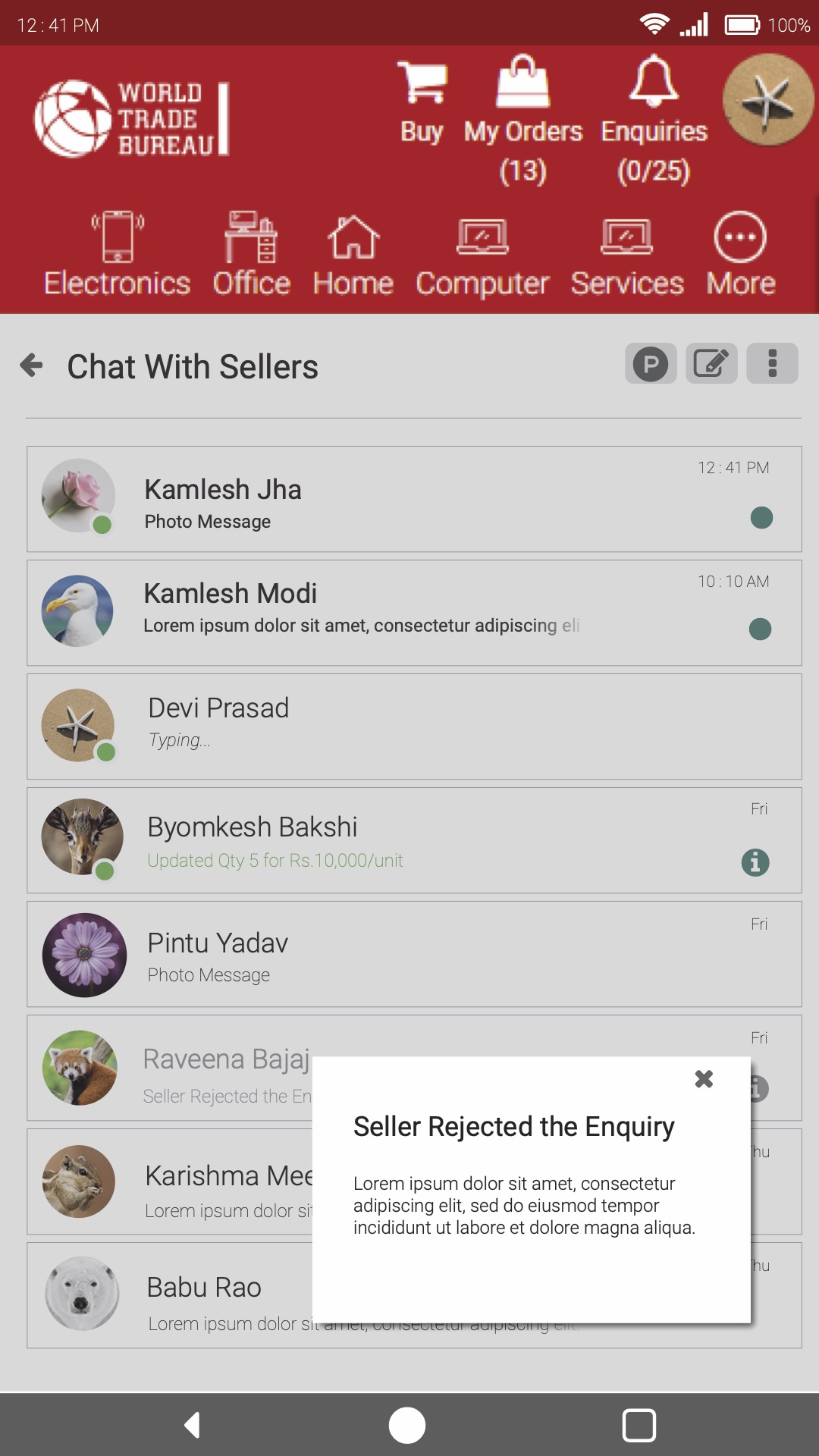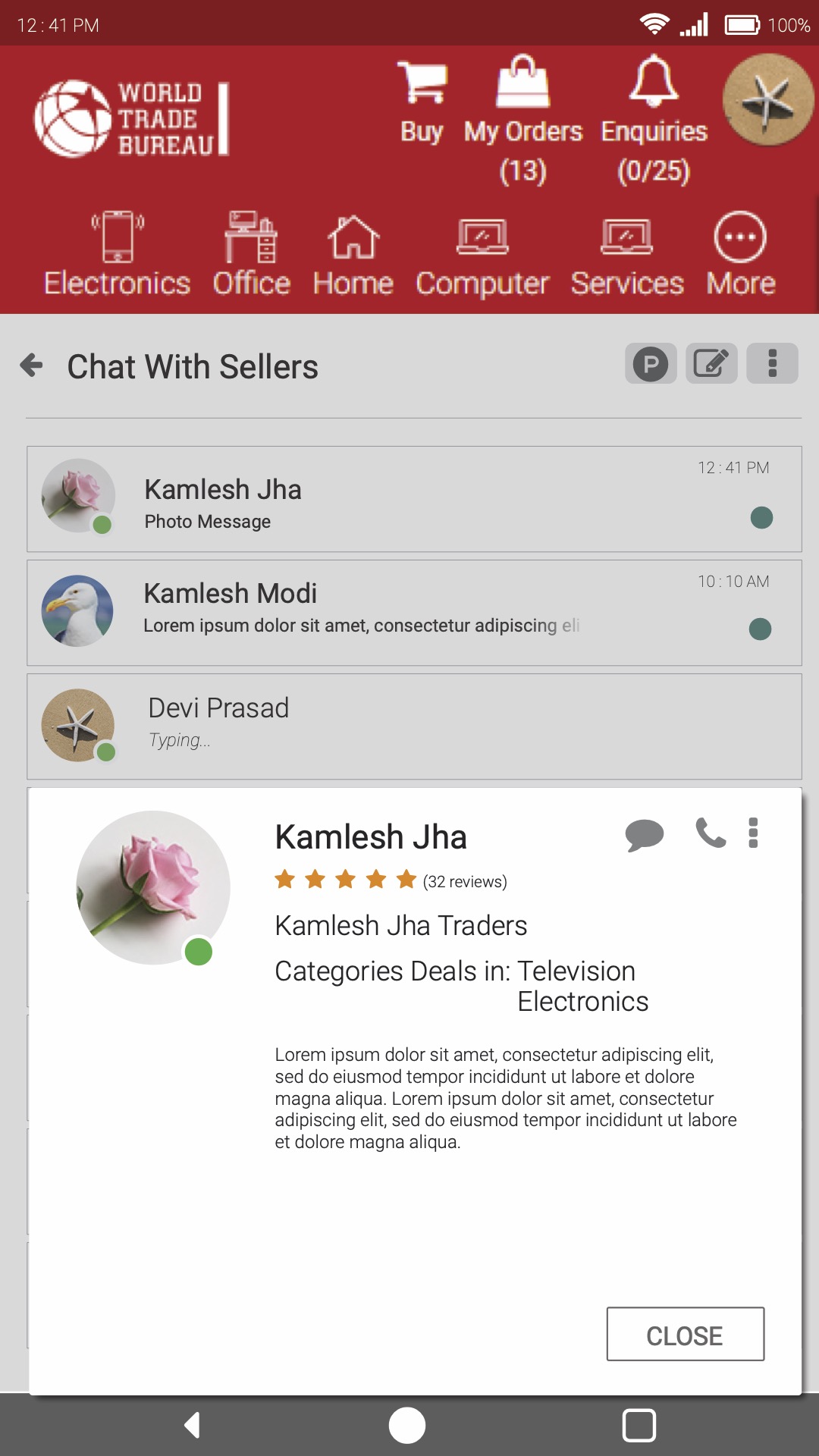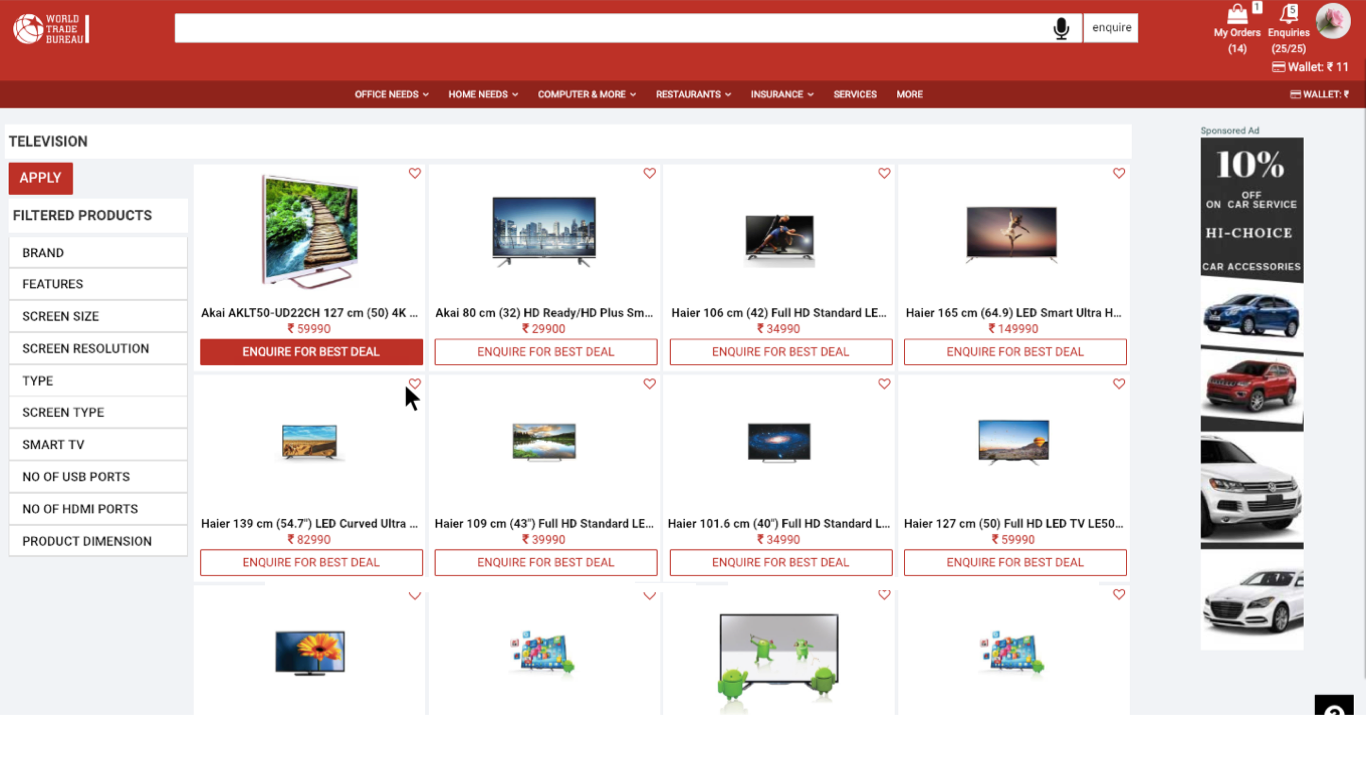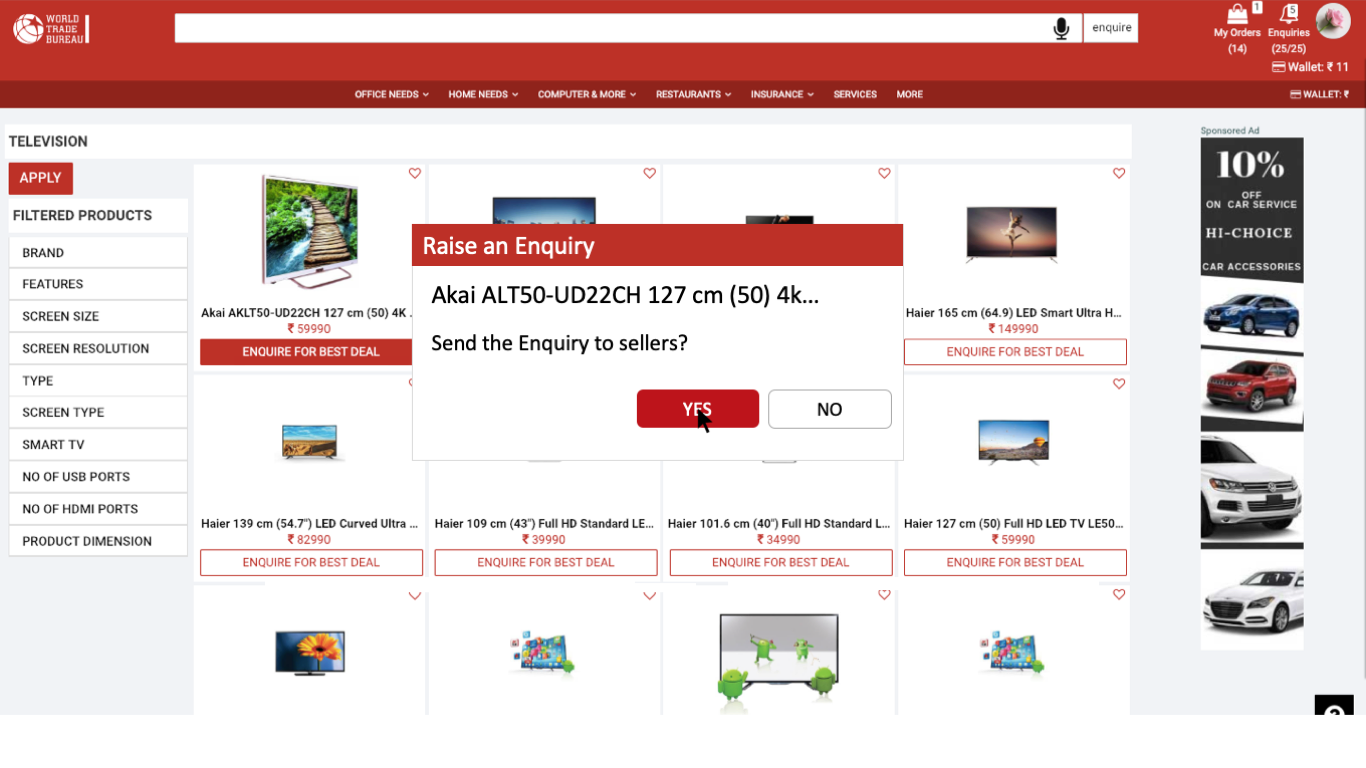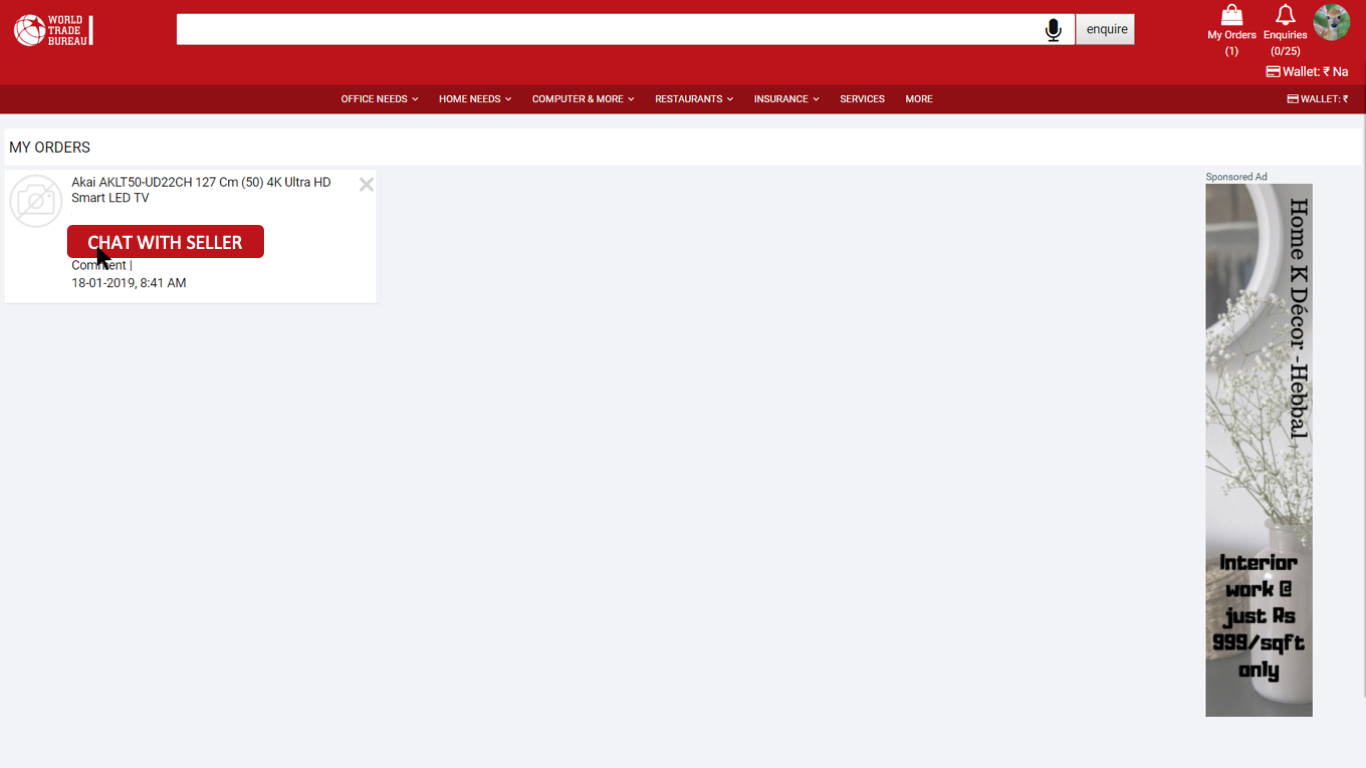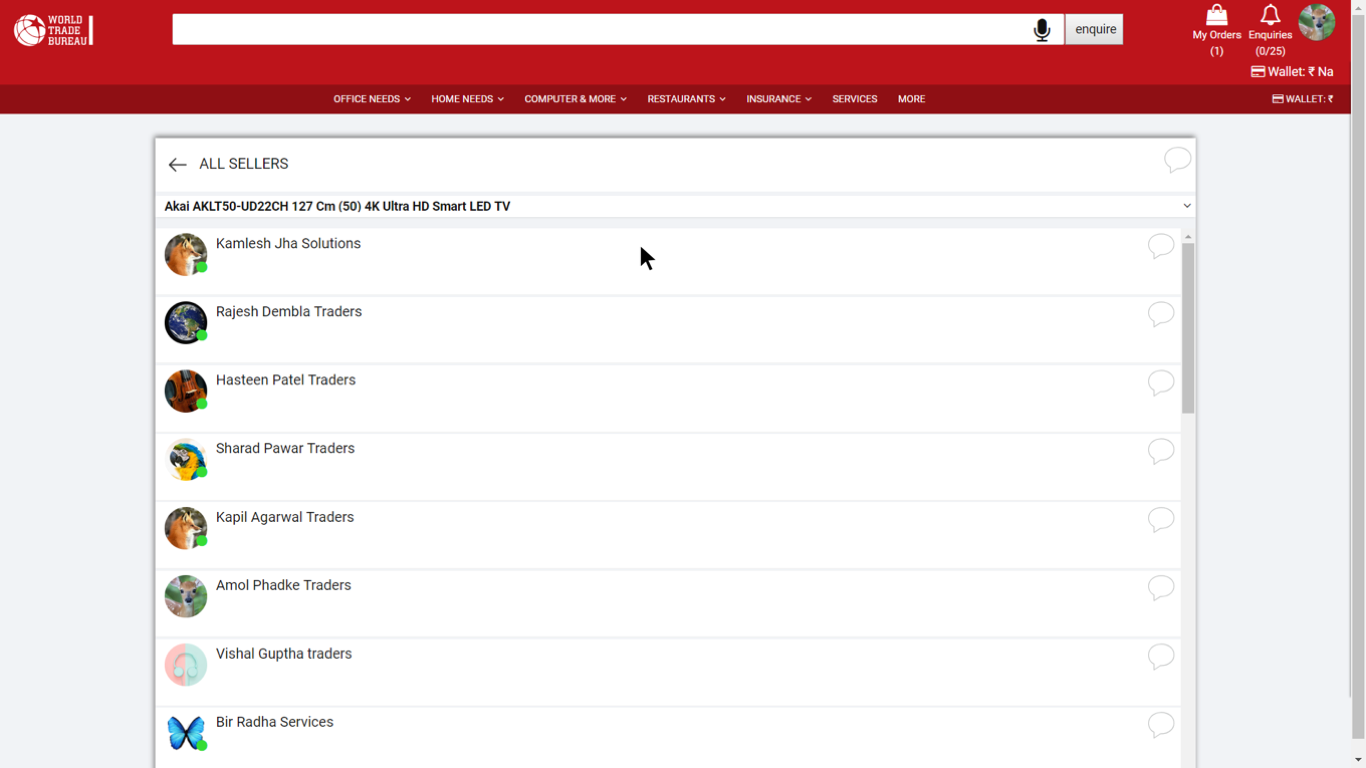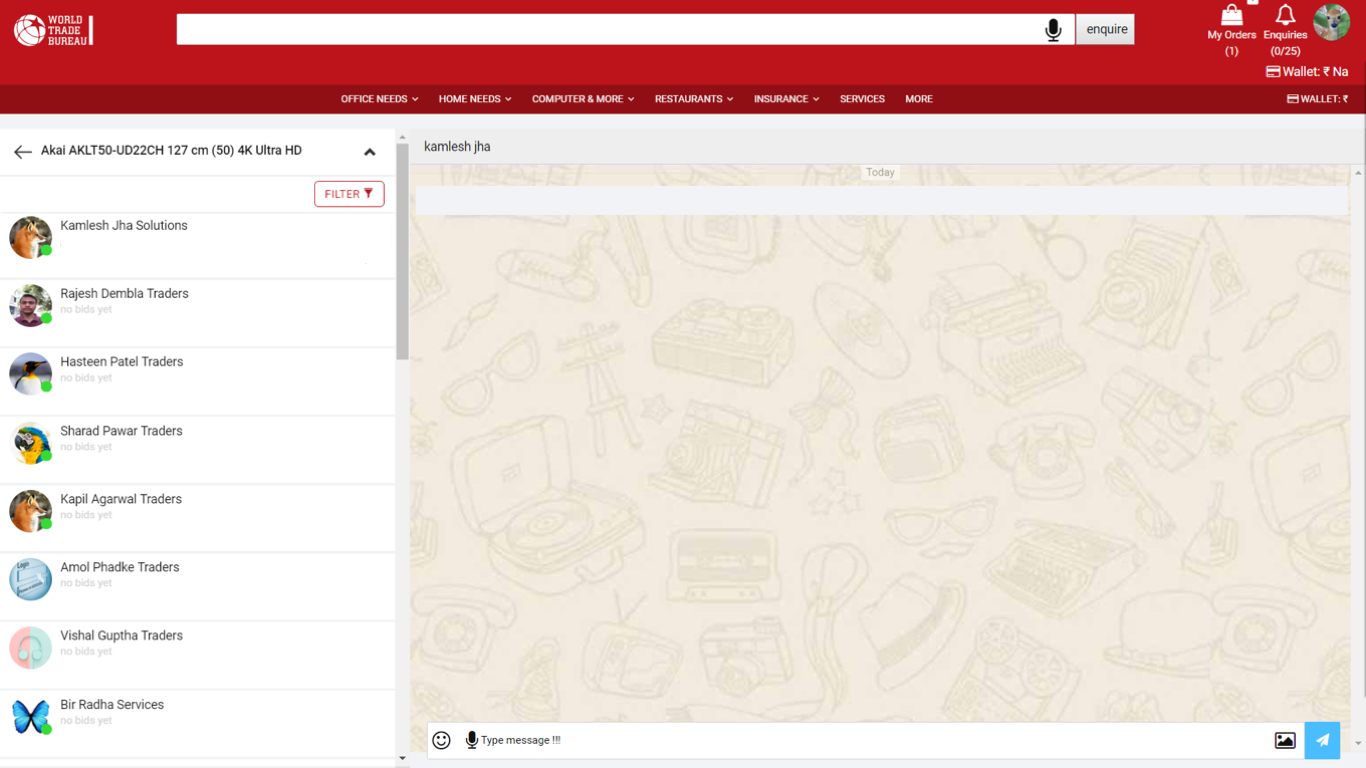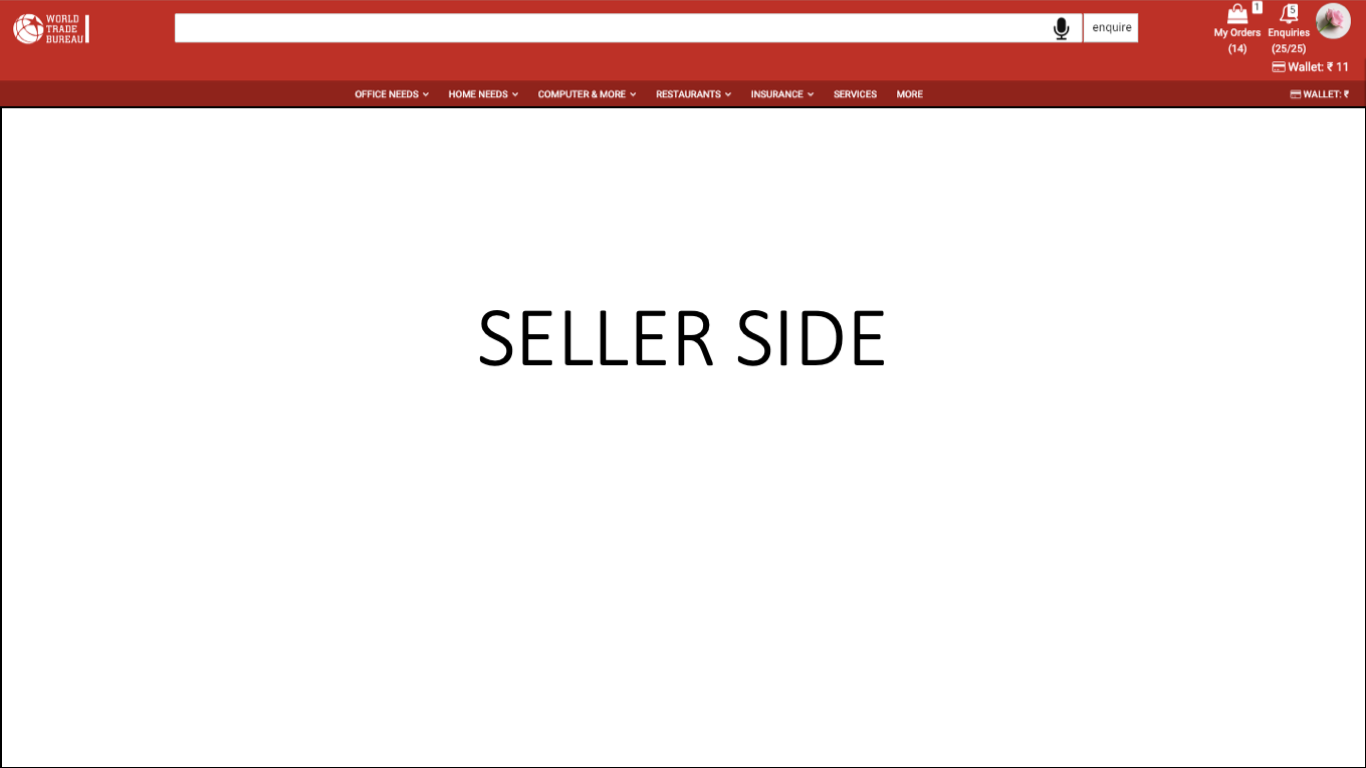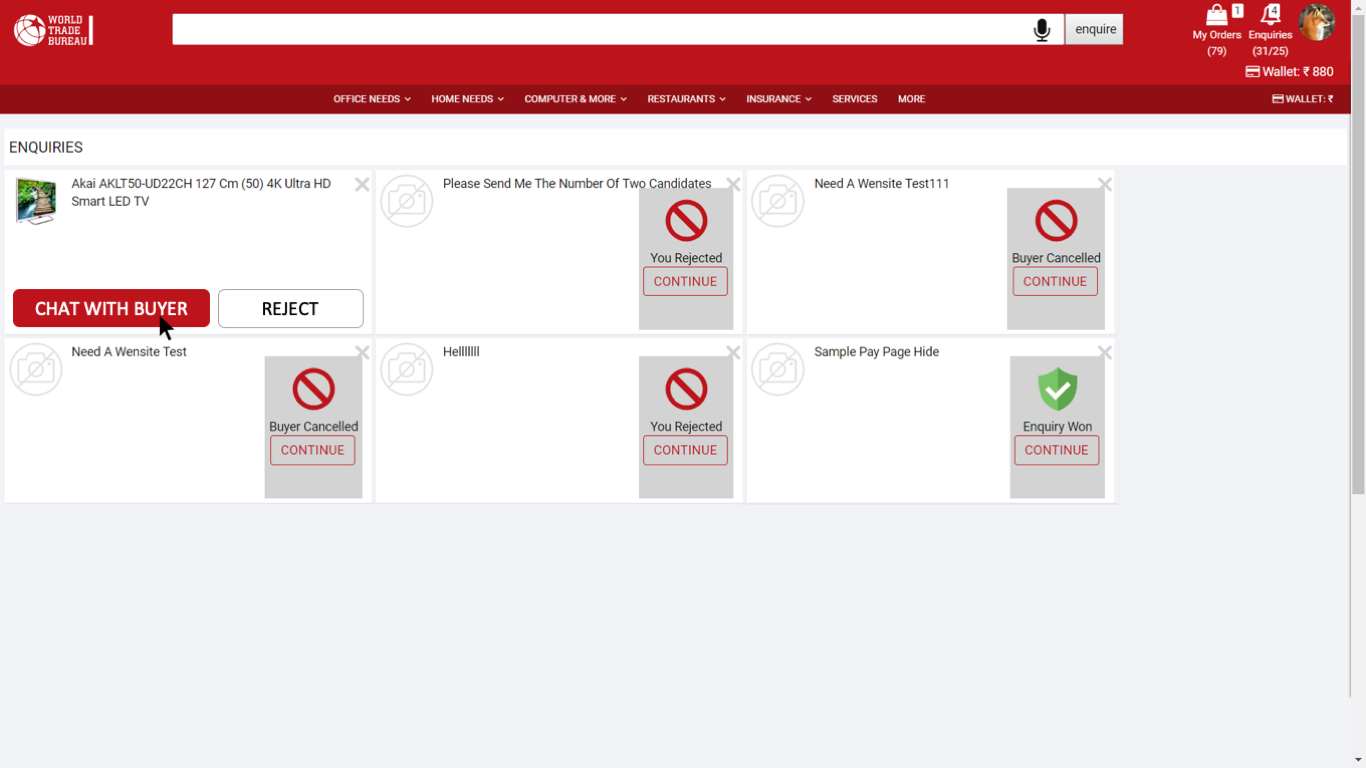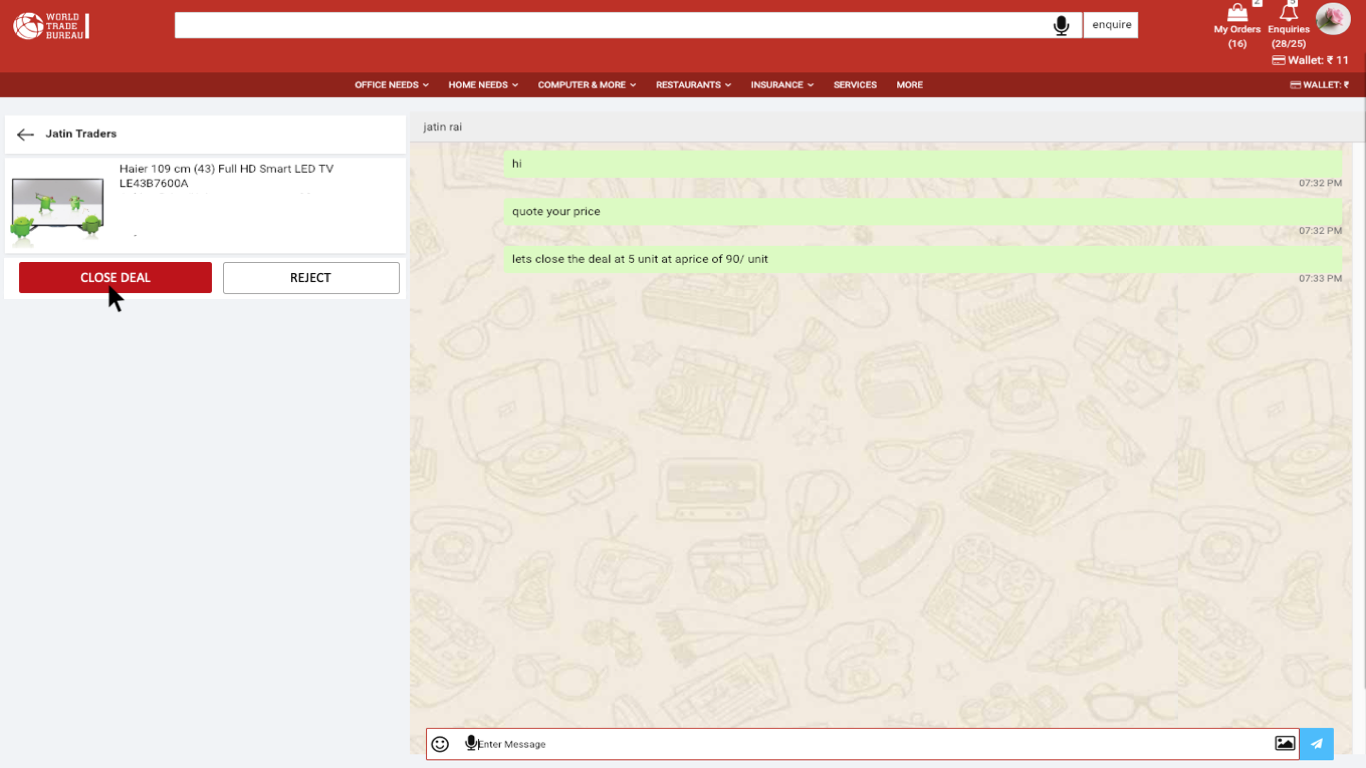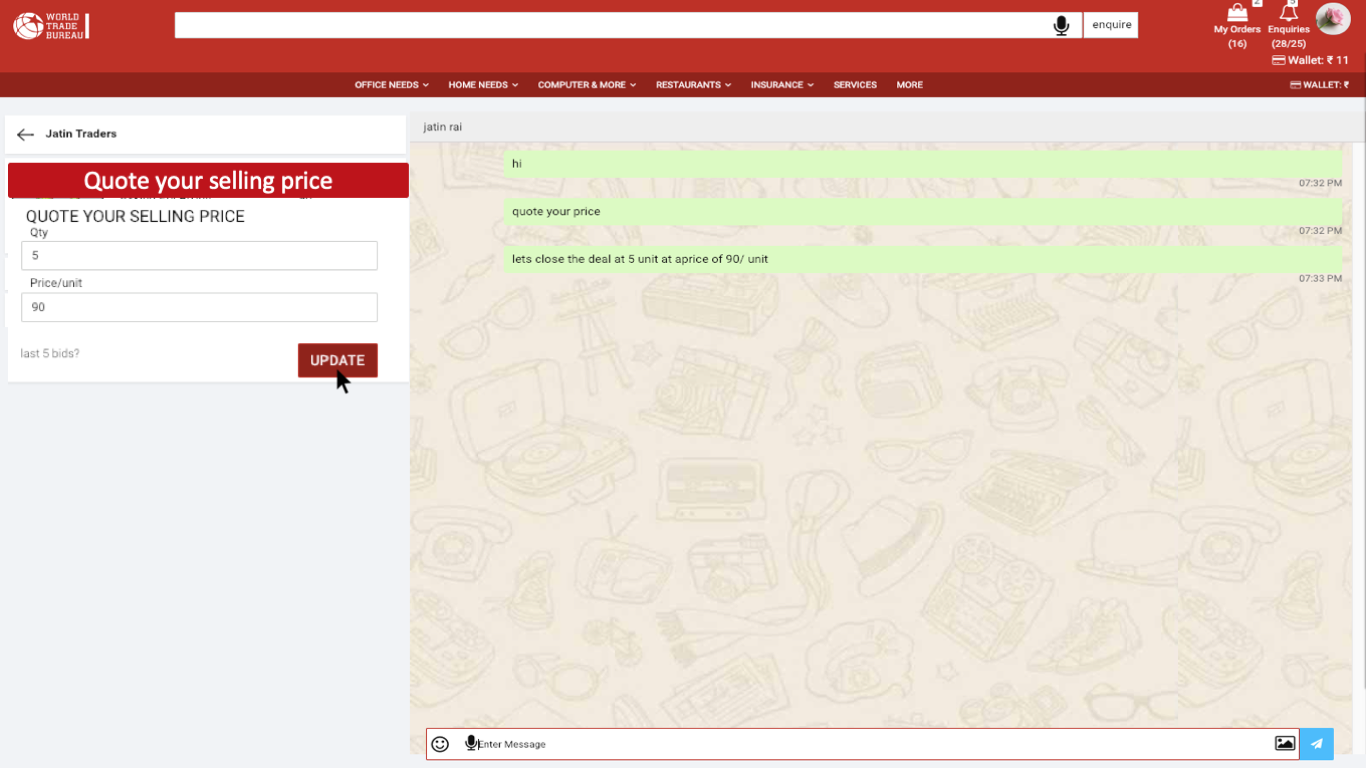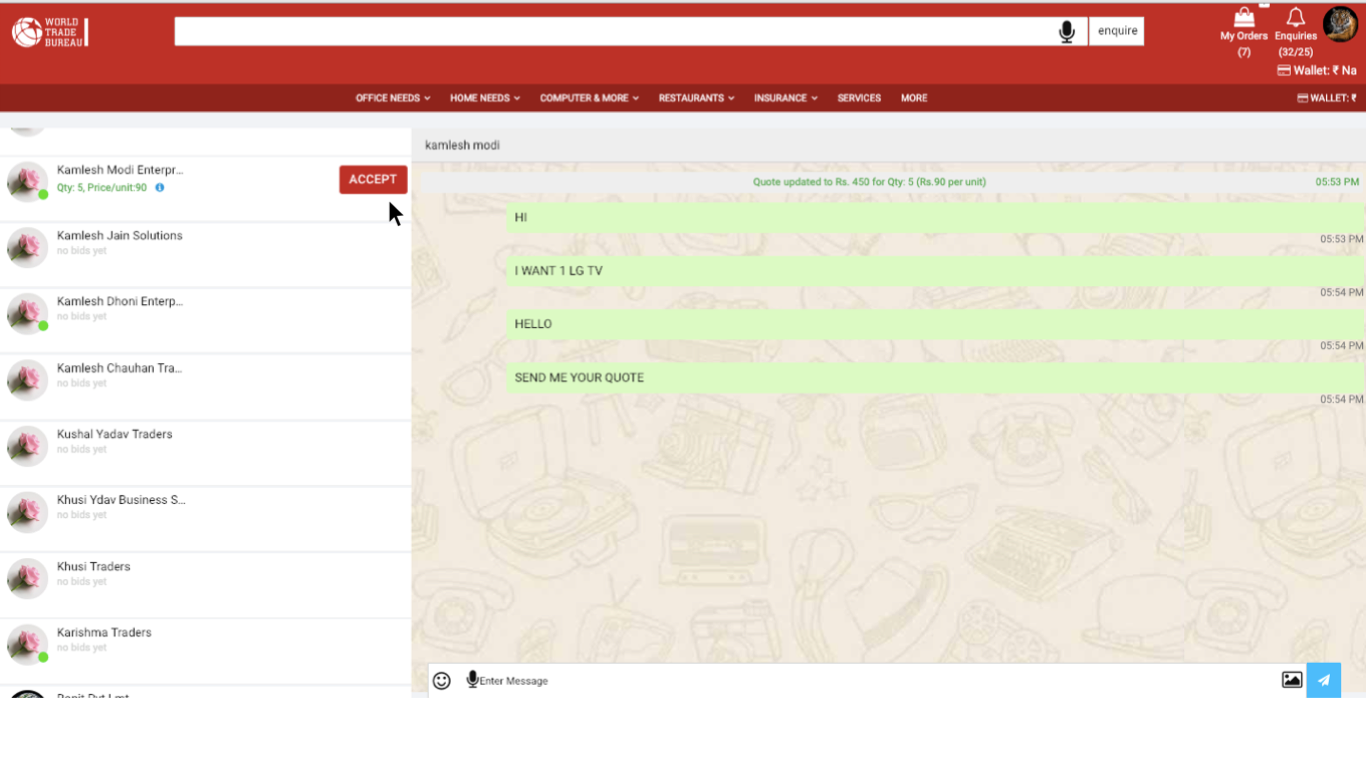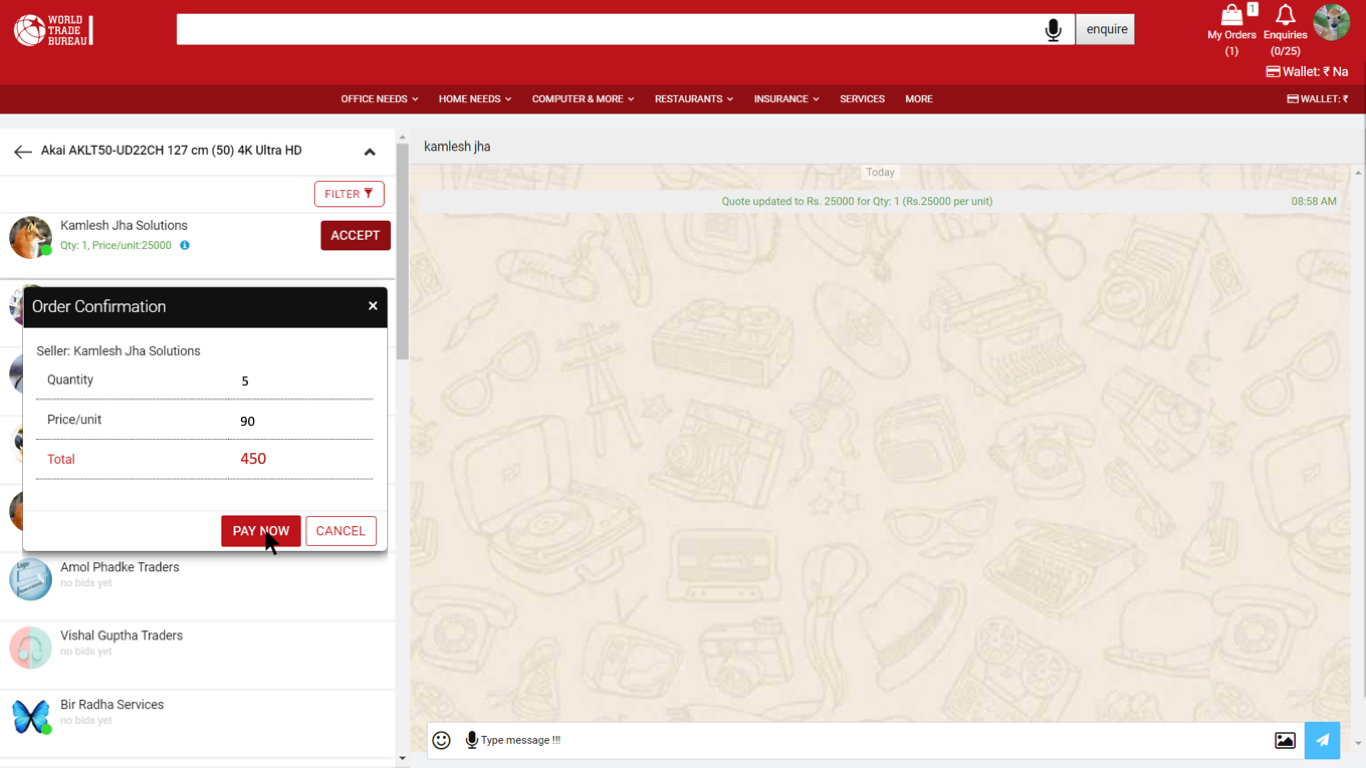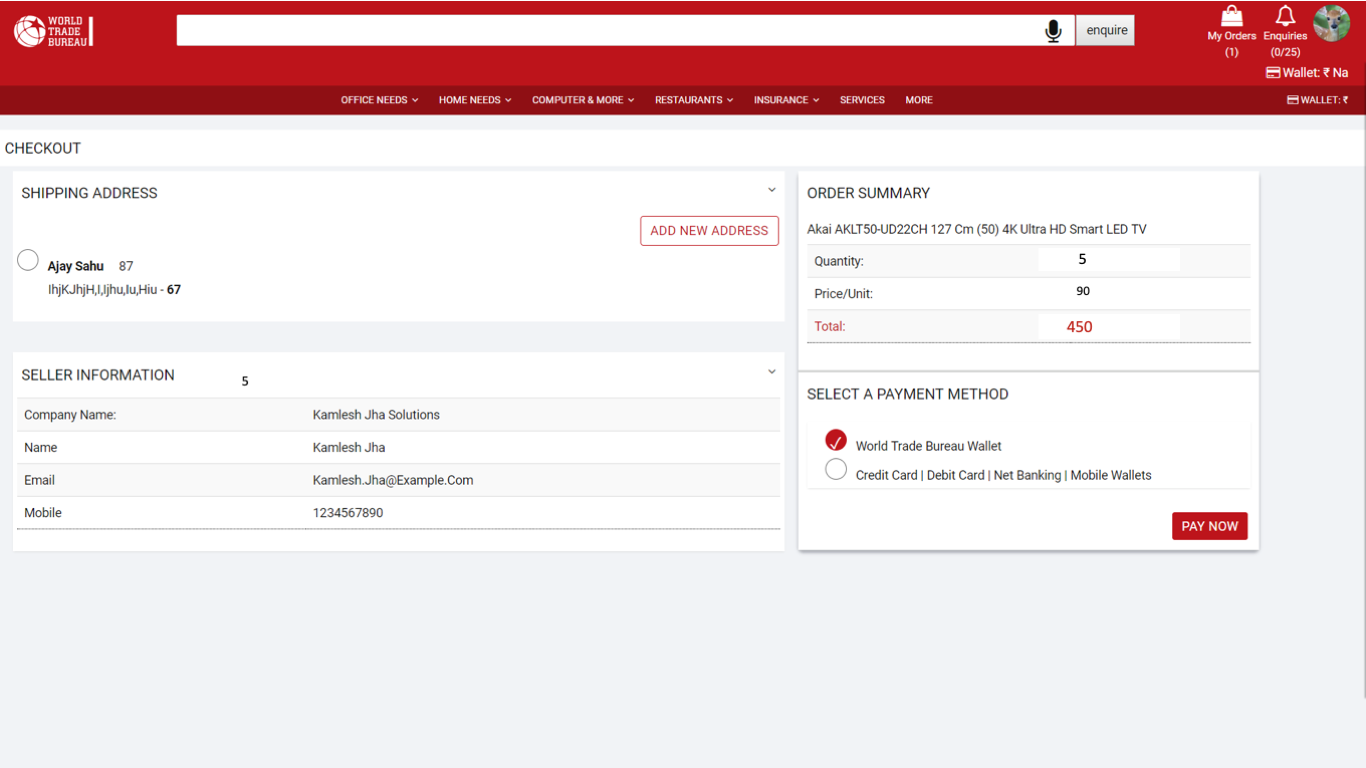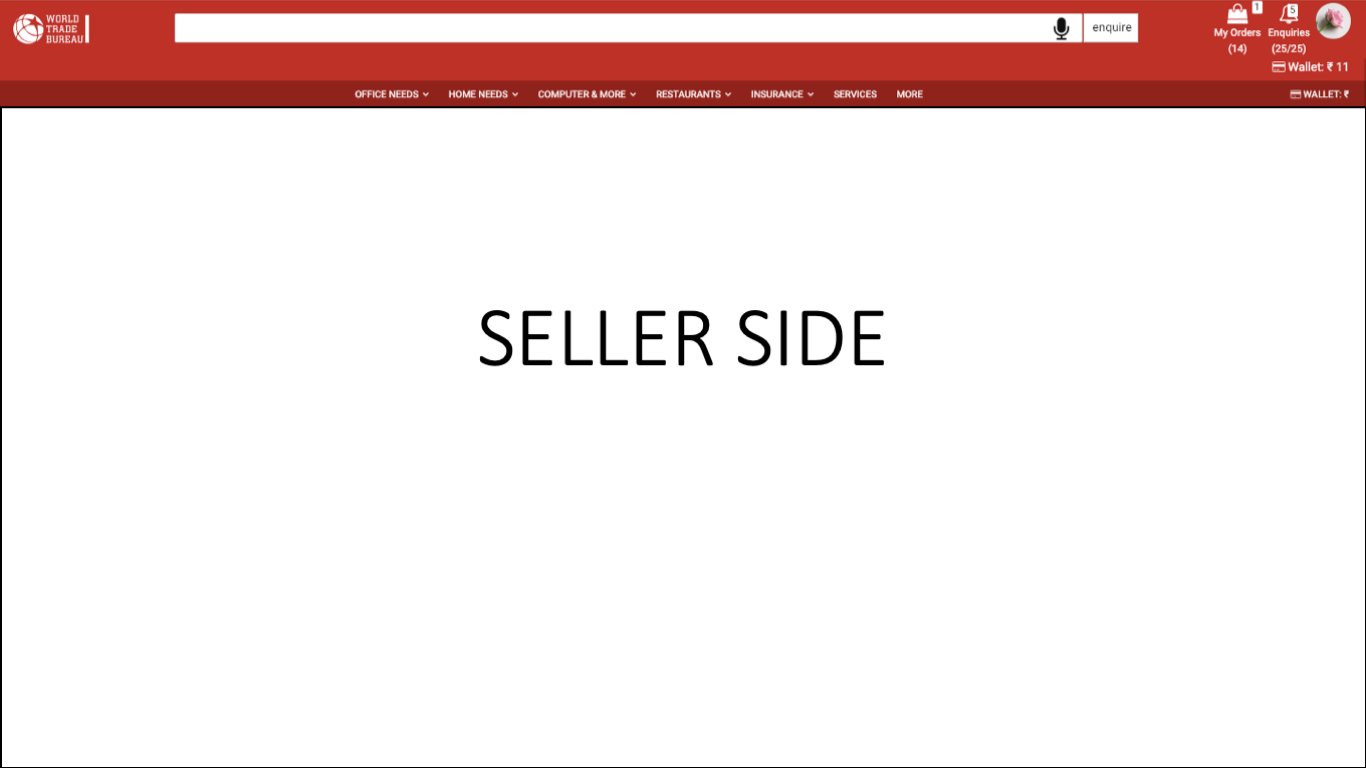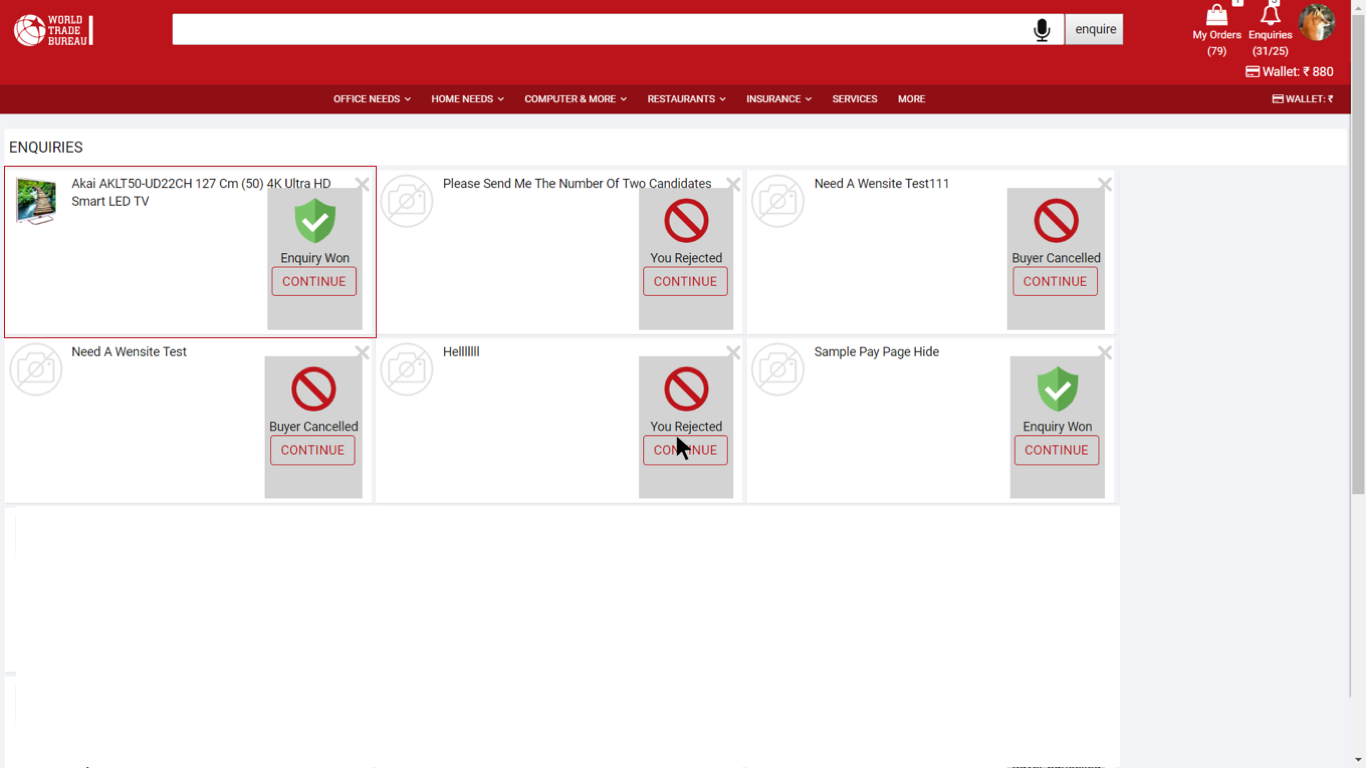
Case Study - World Trade Bureau
2016-19
Overview
World Trade Bureau was an online B2B company. The company was founded in 2015 and I joined it as one of the founding members. World Trade Bureau was a Mutual trade platform that helped Businesses buy and sell from each other. The core concept of the World Trade Bureau was that businesses would buy from each other and in turn facilitating sales for each other. This would happen at a zip code level. So all businesses in a Zip Code would shop from each other in turn increasing each others business. For example, an electronic store owner would buy all his grocery need from a grocery store owner in the same zip code area. And a grocery store owner would buy an electronics item from the electronic store owner in his zip code area. Hence in this manner, all businesses in a Zip Code would buy and sell each other enabling each other’s business. However, this did not restricted businesses to sell elsewhere.
My Role
I joined as one of the founding members of World Trade bureau. Since this was a Startup we cannot stick strictly to the roles. we have to do multiple things to enable the company. I started with product planning and heading the engineering department. Later I concentrated only on product planning and design. I worked closely with the development team making sure whatever features that are planned for the product are implemented in the right way across multiple sprints.
Problem Statement
- Following were the key problem statement that was identified when we started with the World Trade bureau
- How to facilitate local trade at the zip code level
- How to enable the faster transaction between businesses
- How to enable businesses in a local area to quickly buy and sell from each other
- How to enable businesses to reach out to multiple areas in their city and said that is
- How to help businesses with supply chain management especially SMEs and very small business owners
Research
World Trade Bureau was conceptualized by two very senior professionals from the IT industry. One of them was Dharmendra Saxena, He was also the Co-Founder. Dharmendra has 30+ years of experience in the field of Software and Information Technology. He has served in multiple companies at the CXO level. Initially, I had multiple rounds of discussions with him to understand the product concept and what are we trying to build. Those discussions were very fruitful for us to get started. All initial requirement gathering was done or based on these discussions.
As the sales team started reaching out to the potential users of the platform, ie. The business owners, I got more and more access to actual users. I started visiting their businesses to understand how they are doing their day-today business. what are the challenges they are facing in selling the local market? How can we enable them to increase their sales in their local market? And how WTB can help them reach out to more and more customers both locally and at the city and country level.
The discussion with these business owners was really very helpful in understanding what they wanted and how they wanted it to be done. It also helped us realize the level of their technical knowledge and their willingness to adopt new technology. It identified their needs and challenges and helped us to amalgamate their requirement into a product.
We spoke to all kinds of business owners. Whether it was a shoe store owner, an electronic store owner, a grocery store owner, a departmental Store owner, a restaurant owner, and many more. They discussed at length all the problems they have. Research for World Trade Bureau was very exhaustive and thorough.
User Profile
The primary user persona that we considered was SMEs who had a turnover between Rs 25 lakh and Rs10 crore and who do not employ more than 250 peoples. We tried to build features and functionalities around them.
What you see attached here are 2 types of profiles. The User Profile and the System Role Profile. User Profiles are the actual users who would be using the system from a Business perspective. System Role Profile is the role-based definition of the user, both on the business side as well as on the platform administration side.
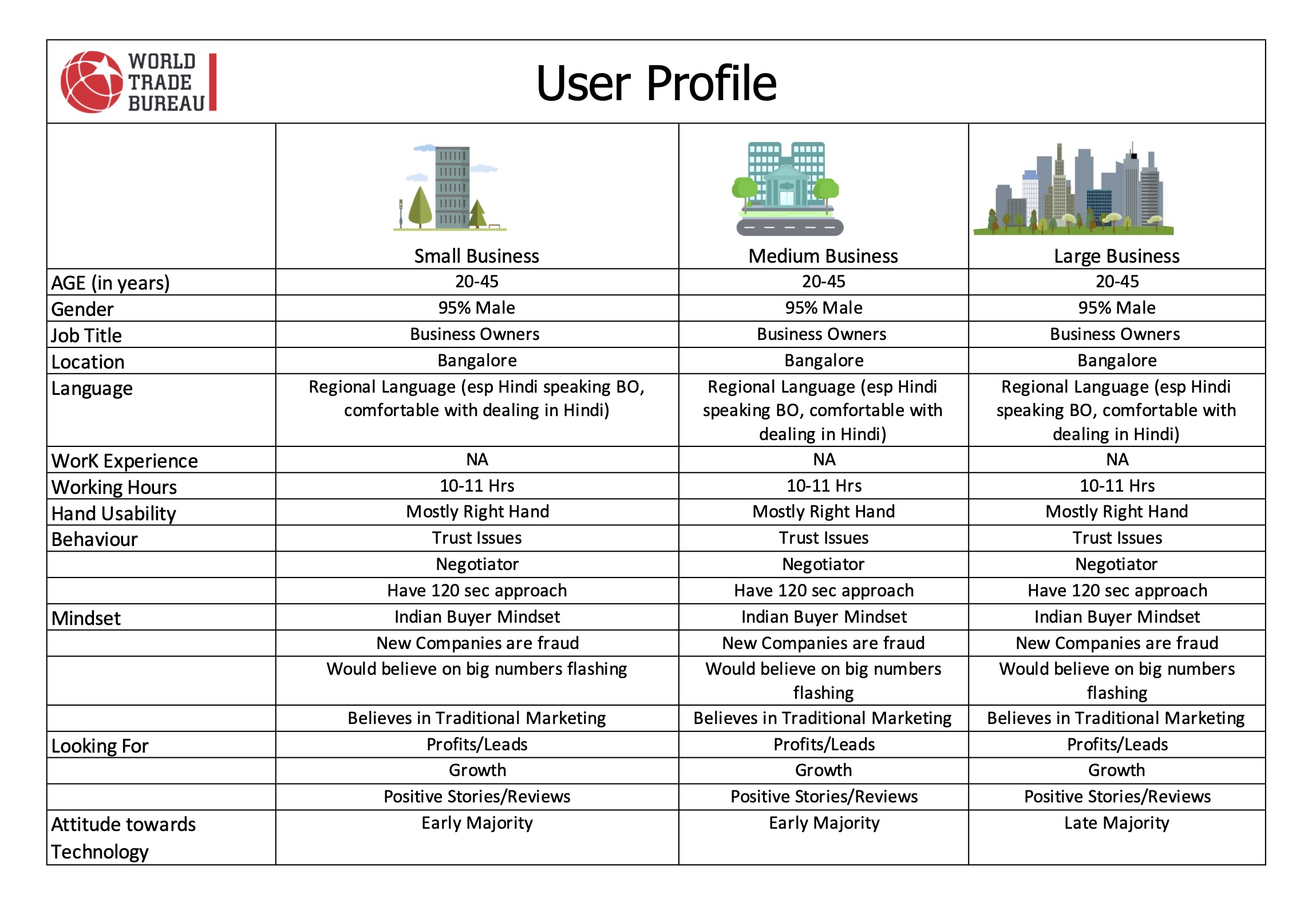
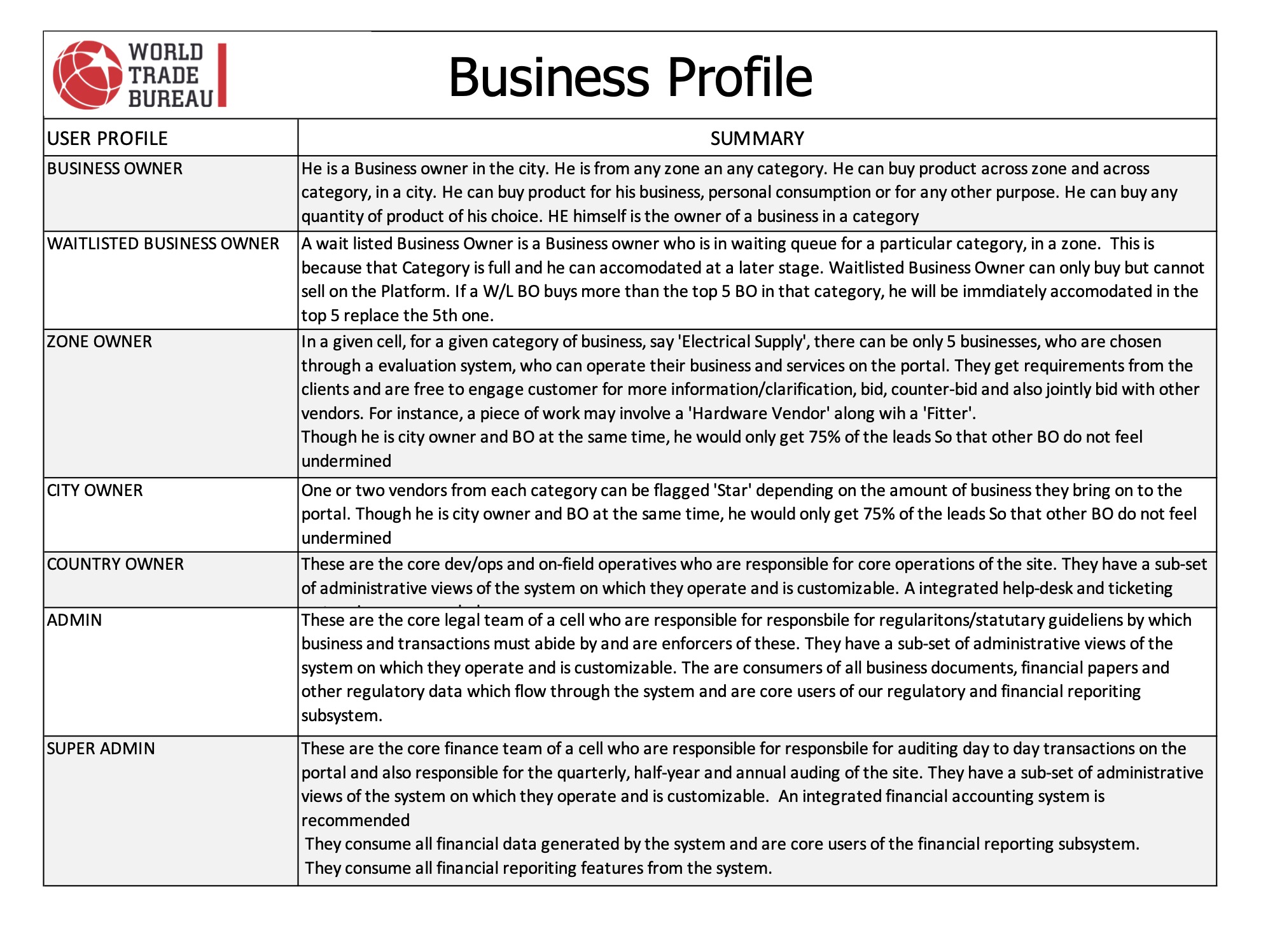
User Persona
When we started working on the user profile, there were multiple profiles that we were considering. We were considering very small business owners who have a very small story of not more than 200 to 300 square feet to large departmental stores owner. But over a period we realised that SMEs would be the primary user of our product and they would be the one who would be keen to use this to improve their businesses. Hence we zeroed down SMEs is and consider them as a primary persona. So we were looking at business owner who had a turnover between Rs 25 lakh and Rs10 crore and who do not employ more than 250 peoples. Of course There was a small sales team that was actively coordinating with large businesses, the wholesalers and CNFs. But they were not our target audience to start with.
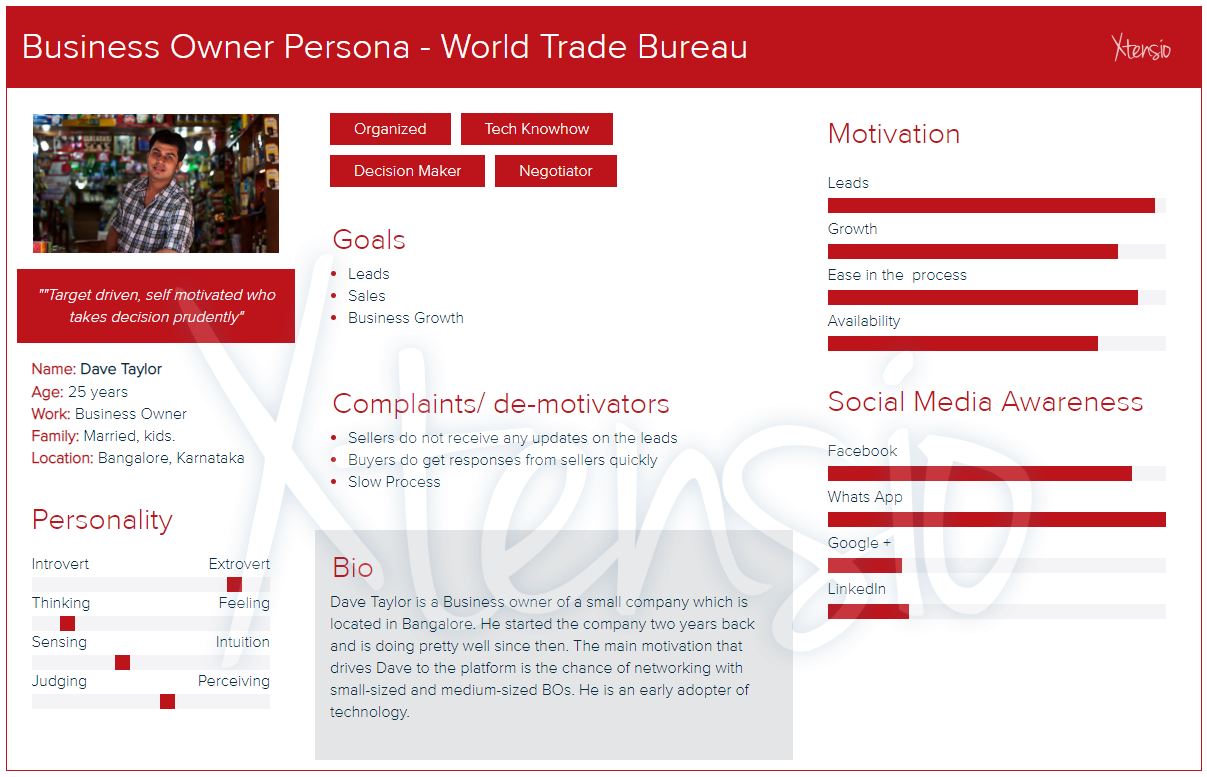
Task Profile
For World Trade Bureau, I was the Product Planner and the Scrum Master for 4 years. All the tasks that we identified and worked on have been documented in Gitlab. Access to Gitlab can be given on-demand. Below is the screen shot of the Gitlab. This shows some of the tasks that was created by the team & me.
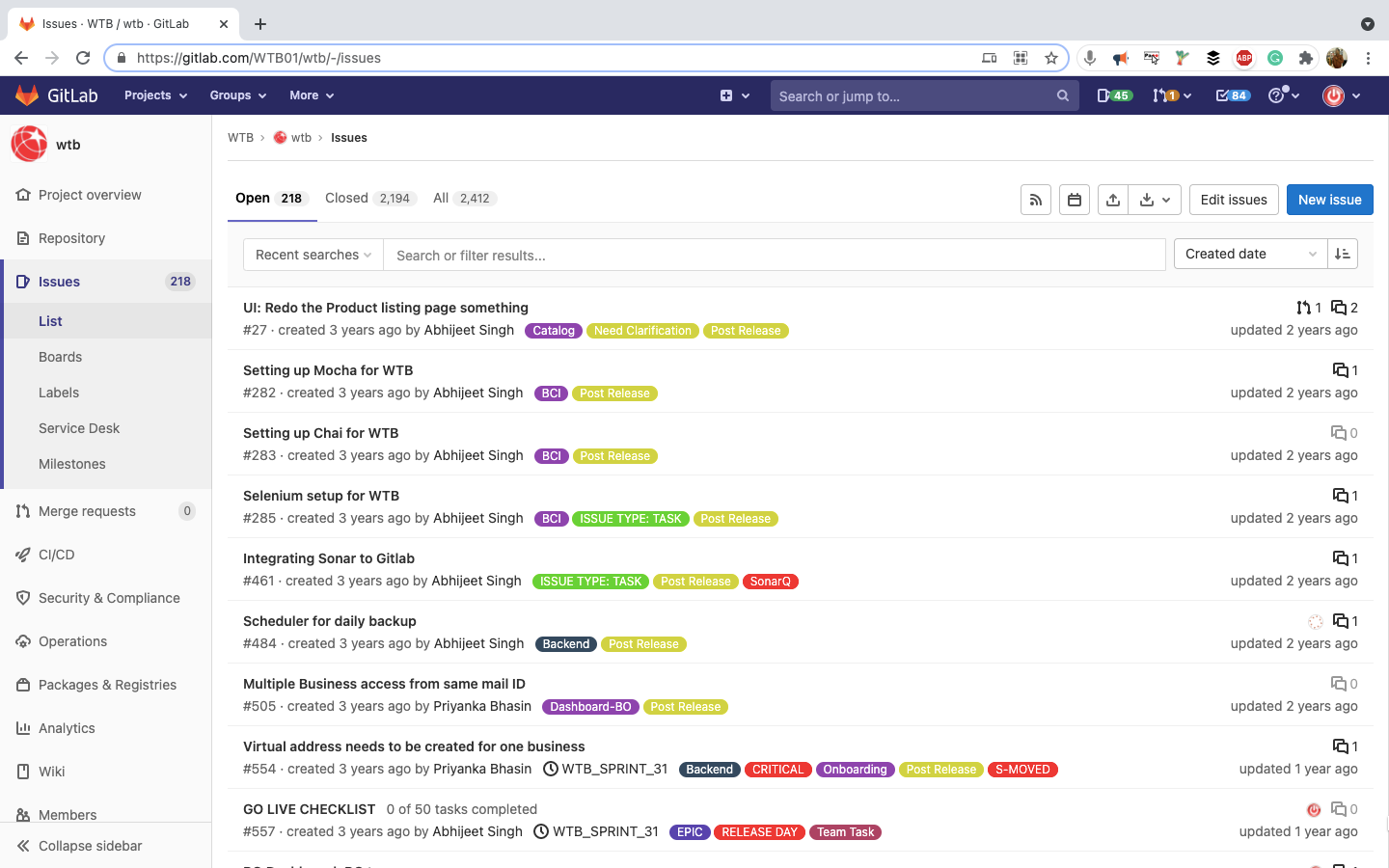
Enquiry Flow Diagram
Here is a flowchart that depicts how an inquiry for a product/service, raised by a buyer flows. If an inquiry cannot be completed in his zone/zip code area, it is moved to the next zone and so on for the next 5 zones. If no seller is found for the product in the next 5 zones, it is moved to the system admin to find and assign a seller for the inquiry
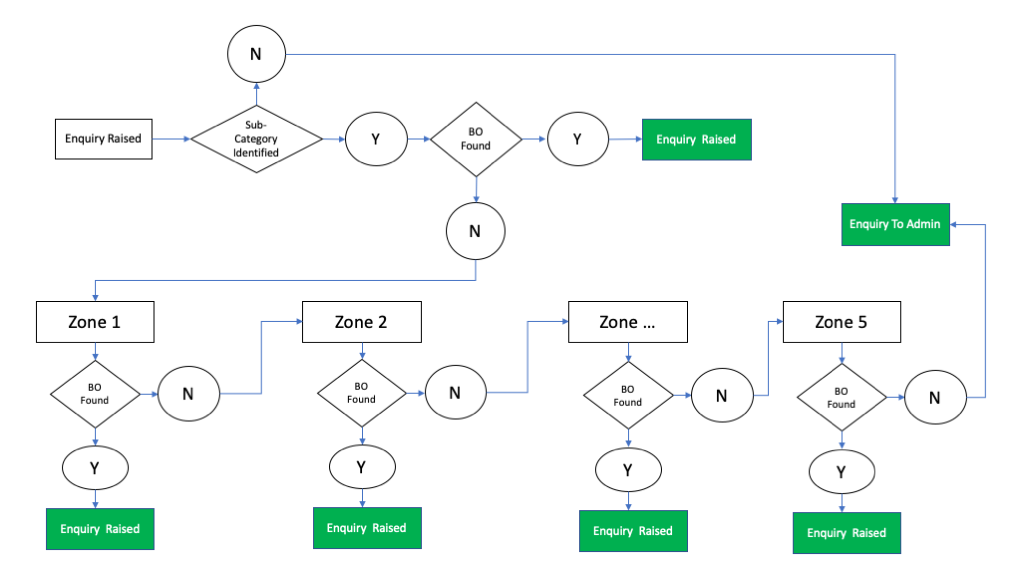
Tools Used
Discover
- Competitor Analysis
- User interview
- Market Research
- User Research
- User Profile
- User Persona
Define
- Business Requirement Documentation
- Gitlab – Product Backlog
- Conceptdraw Mind Map – I.A
Design
- Microsoft PowerPoint
- Adobe Photoshop
Designs
A buyer would raise an inquiry for a product. This inquiry would go to 5 sellers in his zip code area. The seller would respond to the inquiry. A buyer can chat with up to 5 sellers simultaneously. In the chat session, the seller can put the price and the quantity and the buyers and sellers can negotiate on it. Finally, once they have completed the negotiation, the buyer can make the payment online. The payment is transferred to the seller and the seller would ship the product to the buyer. The complete transaction is facilitated on the world Trade Bureau platform.
Bidding System – Mobile
Bidding System – Desktop
Sign Up
Bidding System
Release Demo
Lessons Learned
World bureau was an amazing learning journey for me. Right from requirement gathering all the way to market lunch, it was a life changing experience for me. Here are the top 5 learnings that I would like to mention
- Talk to customers before coding
- Ideate with paper and pencil never ideate without them
- Take note, take a lot of them.
- wherever possible record conversations
- Maintain a strong Product Backlog and align your design to it.
Final Words
Working at World Trade Bureau was an amazing experience. I worked with the team for four years. We made an awesome product. Initially, we had some challenges in requirement gathering and stakeholder discussions. But those were streamlined as we move forward. We had very clearly defined requirements and that helped us plan the product very well. I along with other designers was able to deliver design sprint after sprint. This enabled the development team to ensure that they don’t have to wait for design deliverables. We always kept designs at least two sprints ready.
At regular intervals, we did Usability Testing and UX Evaluation for the sprint deliverables. The engineering team did an awesome job. We had great collaboration amongst us. We had fortnightly release which would be running late in the evening. But the whole team was always present to make sure that release is done flawlessly. The testing team assured that everything is tested at the end of every sprint and after every release. The product was being well received by the market before covid-19 Struct.
